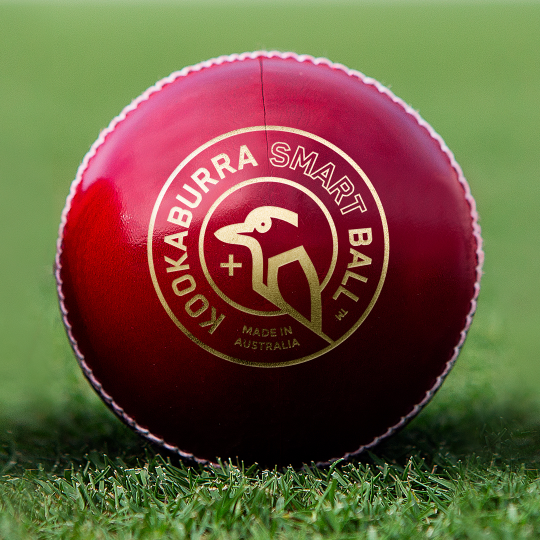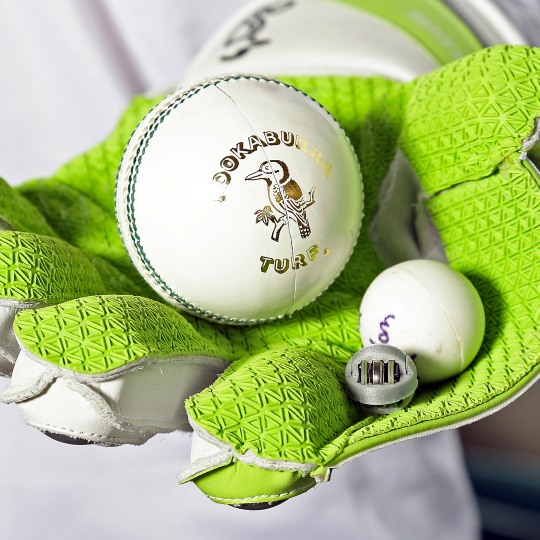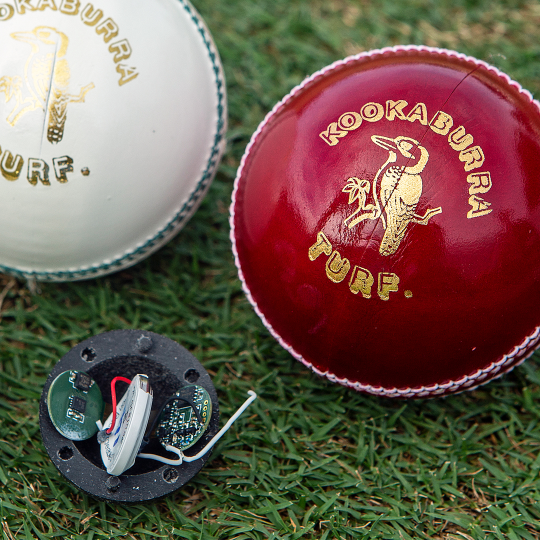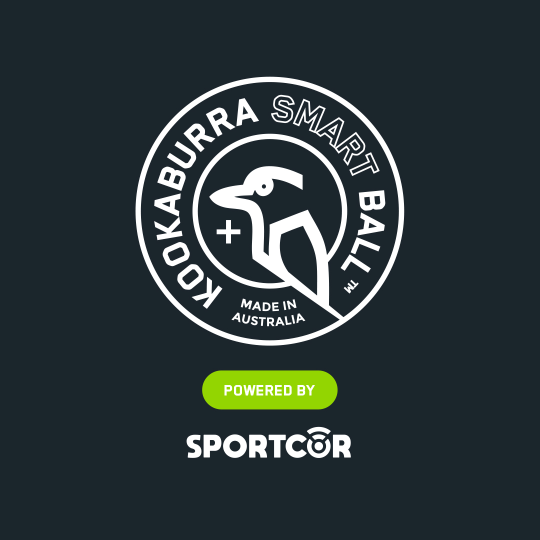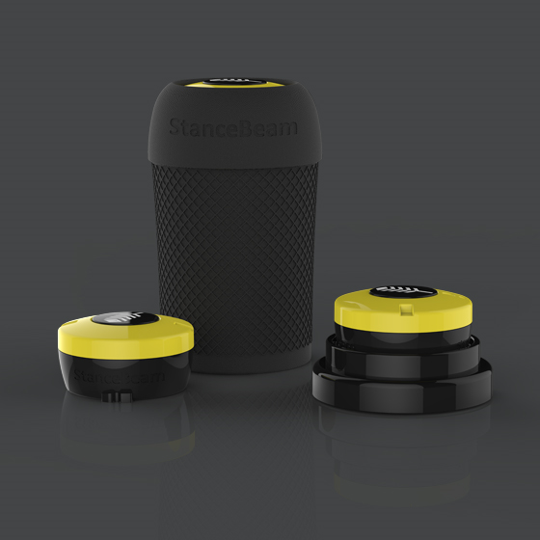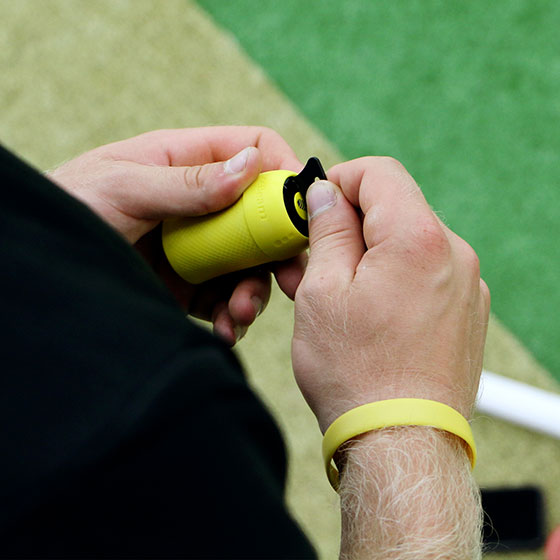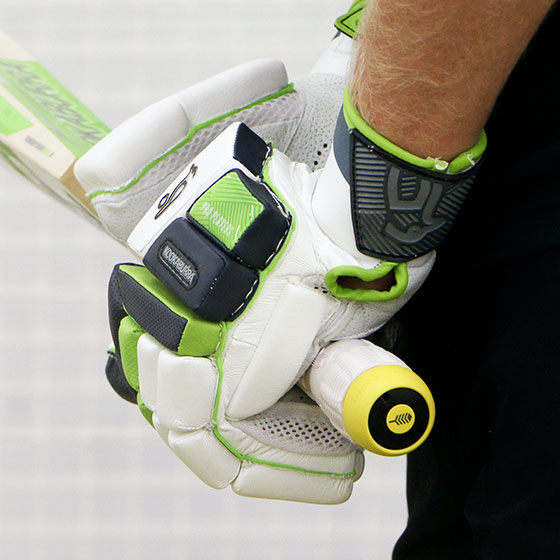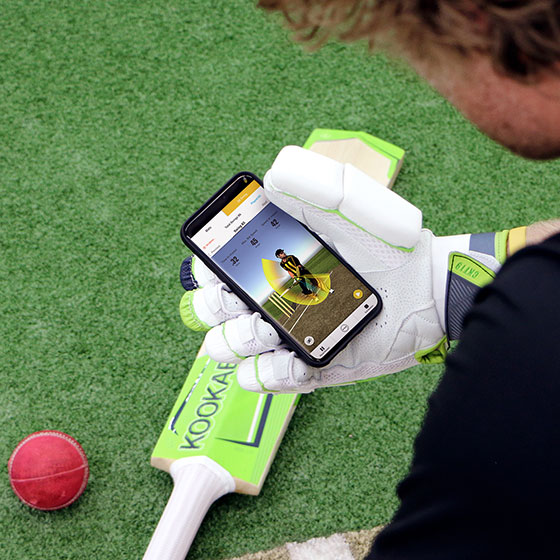SmartBall FAQs
What is a SmartBall?
The Kookaburra SmartBall is a partnership between Kookaburra Sports and SportCor, which takes a regular Kookaburra cricket ball and embeds a SportCor electronic chip inside the core of the ball. It enables data and information to flow from inside the ball that’s being bowled.
What does it do?
The chip inside the core transmits information from the ball back to a phone/tablet app. The chip can currently measure the speed and revolutions of the ball at different stages of its journey from the hand of a bowler. This gives us new and improved insights into the delivery that has never been seen before.
How is that different to current data?
Currently there is one speed and revolution figure that is used when a ball is bowled. It comes from a fixed stationary radar that means that speed reading will be recorded at the same point regardless of the height of the bowler or their delivery plane. This has limits, most obviously it results in a speed bias to the bowler with the lower release point (either through height or action).
The difference with the SmartBall is that it is the ball telling us the speed and revolutions objectively and not from another instrument trying to capture the ball from one subjective viewpoint.
The SmartBall allows the ball to talk.
So what’s new?
There are a lot of possibilities with this but right now we are already seeing brand new data. Irrespective of the delivery height of the player, the ball tells us:
• The speed and revolutions at the release point (the moment the hand lets go)
• The speed and revolutions pre-bounce (reading just before it hits the pitch)
• The speed post-bounce (the reading just after the ball hits the pitch)
This gives a whole new insight to what it’s like in the middle, how we measure players output, and how we coach and identify talent.
The term ‘a heavy ball’ of the pace of a bowler off the wicket can now be measured. It also begs the question whether we should look at the release speed or the post-bounce speed to consider a true comparison between bowlers and the difficulty batters will have.
How is the Electronic Chip embedded into the ball?
In a Turf ball (with the 5 layer quilt) a synthetic core has been developed that replicates the weight and properties of the traditional core, but has the chip caged inside it.
A technique for curing the cork and rubber core in a traditional manner has also been developed so it can also be used inside balls of all sizes and standards (ie two piece balls, junior balls etc).
Does it play differently to a standard cricket ball?
No, all the testing is designed around a core that has the same ranges of size, weight and bounce measures as a traditional core. It fits that criteria and our testing suggests it plays no differently.
Women’s cricket?
At the moment the special core weight can’t be reduced, so a SmartBall cannot weigh in at the standard women’s ball weight of 142 grams. But this is something that is being worked on and we would expect to be able to replicate the weight of a women’s size ball very soon.
Can it handle being hit by a cricket bat?
Yes. While more testing is required for the ball we’ve seen today to enter a fully-fledged high level match, the ball and the electronic chip can handle the regular punishment from a cricket bat. We’ve both tested with bats in the nets and on Kookaburra’s regular impact testing machines that test repeated impact at upwards of 150kmh.
Is it going to be used in international cricket?
There is not enough testing done yet for it go straight into a test match tomorrow, however within the next year we hope to be in a position to offer it up to the ICC and its member boards as a ball that could be tested and used at international level. It’s likely we will see it trialled in a major Twenty20 league within the year.
Is it relevant to grassroots cricket?
All the feedback we’ve had from coaches is that the SmartBall will be a valuable coaching aid to players of all levels, from test stars right down to aspiring local junior cricketers who want to improve their bowling. The simplicity of the ball connecting to an app means that it can be used in training by any player and we expect there to be training ball made available to the public soon.
What else could it do?
That’s where the excitement lies. Today it’s giving us new data we’ve never seen in cricket before, but in six months it could be giving us much more.
The types of things that will be looked at over the next few years include:
• Definitive information on whether a ball has hit the bat, pad or ground
• Enhancements on DRS predictive technology
• Further updates on how both elite and grassroots players, coaches, umpires, broadcasters and fans can get greater information about their game
Can I buy it?
It is not available for sale yet as we are still going through testing stages but we are hoping that in the medium-term future it will be a product that will be available in some form.
What will it cost?
A retail cost is a long way off and dependent on economies of scale, but if this was to become commonplace at first-class level or even at grassroots level, we think this add-on could be kept very affordable for the sport.
How long does the battery last?
At the moment the battery lasts 8 hours which mimics a day of Test cricket. However, the battery can be recharged at any time by placing the ball in its cradle. So one day it might be commonplace that a ball is placed on the cradle for charging by the umpires at the lunch and tea break.
How long does the chip last?
At the moment the chips last approx. 18 months (outliving the normal life of a cricket ball), but we are currently working on increases to that timeframe.
Has anyone used it?
Yes, it’s been trialled and tested by some cricketers in Australia, most notably the Queensland Bulls Sheffield Shield squad. While its full capability has not been realised or data gathered by these players or teams, the trials have been conducted as a way for Kookaburra and SportCor to ascertain whether the ball plays the way it should and that the app receives accurate data. We are at a point where we are confident that we’ve achieved these objectives.


